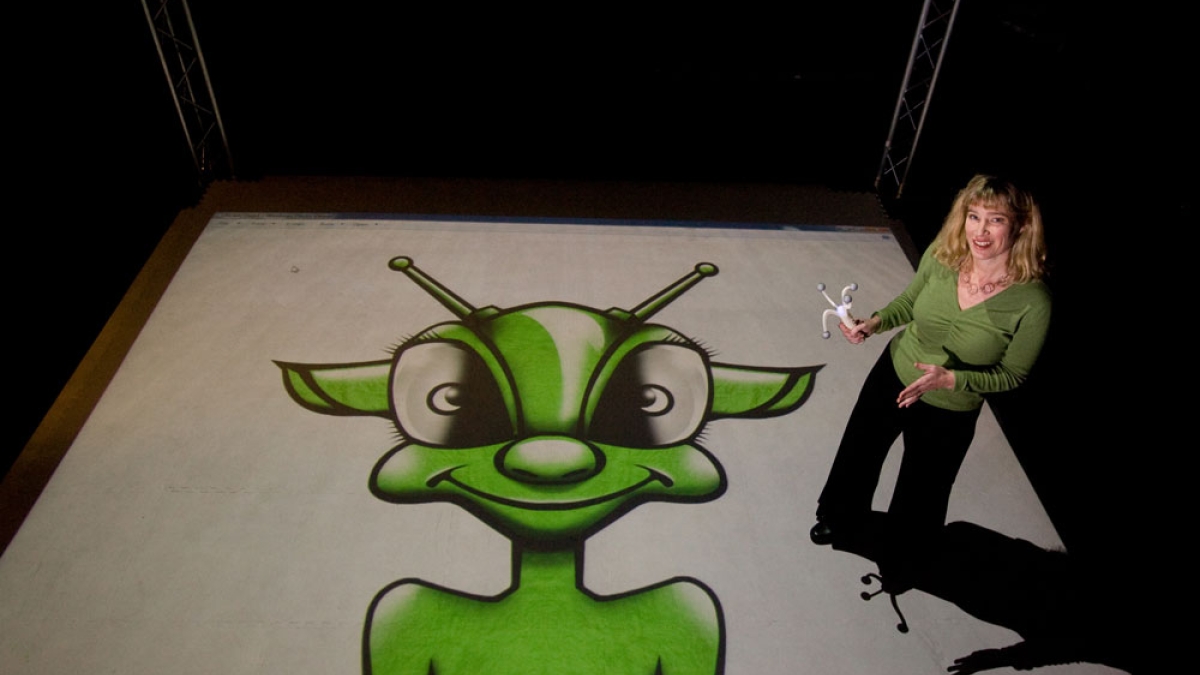ASU professors launch successful startup company

Students at Coronado High School in Scottsdale, Ariz. and at ChicagoQuest School in Chicago can learn about a physics concept, such as velocity, by moving through space themselves, watching their 3D movements represented in instant graphs and equations, and hearing the sound of their actions getting faster.
It’s called “embodied learning,” and it's an emerging field blending learning sciences and human-computer interaction. Their learning lab was created by SMALLab Learning, a company founded by ASU faculty and graduate students.
The teens also study concepts by using their hands and bodies in real 3D space to manipulate images, sounds, text and graphics. In exploring how frequency relates to color, for instance, the students collaborate to control the amount of red, green and blue light mixing in a virtual spotlight by raising and lowering their arms.
Scientists have discovered that nearly all of our experiences are grounded in the body. Physical movements, driven by human-computer interaction, have the potential to transform K-12 learning.
SMALLab Learning was developed over a period of several years by an interdisciplinary ASU team led by David Birchfield, associate professor in the School of Arts, Media and Engineering in the Herberger Institute for Design and the Arts. The team includes researchers from education, psychology, interactive media, computer science and the arts.
Mina Johnson-Glenberg, associate research scientist, joined the team in 2008 as chief learning officer, helping to found the company in 2010.
“My background is in cognitive psychology and in running ed tech companies, and I was looking for a great new project,” says Johnson-Glenberg. “David needed someone who understood education and experimental design, someone who could assess whether a product is really working. I loved the innovative things they were doing. It’s been a very productive partnership.”
The company received a Gates Foundation/Educause grant and also a catalyst loan last year from Arizona Technology Enterprises (AzTE), the technology transfer organization for ASU.
“Getting that funding was so valuable," Johnson-Glenberg says. "It allowed us to shoot a video explaining the product, to get our website up and running and to begin to fill out the curriculum. AzTE also put us in touch with a law firm to write the license agreement and helped us with press releases. If we need to talk to someone at AzTE, they are always helpful.
“David is taking the lead on commercialization, the marketing and sales, and I take the lead on evaluation, helping to design content and write grants. We had our first sale last fall to ChicagoQuest, which was very exciting.”
Johnson-Glenberg also is affiliated with the Department of Psychology and the new ASU Learning Sciences Institute.
Their initial product, SMALLab, is a 15’ by 15’ freestanding lab space surrounded by sensing and feedback equipment including cameras, video projector, audio speakers and a mixture of tracked physical objects. A new product called Flow which uses an Interactive Whiteboard and motion-capture technology similar to the Xbox Kinect is smaller and more cost-effective and will open a whole new market.
They offer a variety of game-like, collaborative learning scenarios that have a record of demonstrated success in helping students learn, Johnson-Glenberg says. In a chemistry titration lab scenario, for instance, teams of students experience the process of titration using a “virtual flask” projected onto the floor.
A broad range of topics across all grade levels cover physics, chemistry, biology, earth science, English language arts and the performing arts.
Julie Stephan, a teacher at Coronado High School, says she’s pleased with the reaction of students to SMALLab.
“The enthusiasm level I see with the kids is phenomenal. It’s very dynamic. They’re discussing results and coming up with new ideas, all at the same time,” Stephan says.
One of her students who was struggling with the concept of frequency and its relation to color said it “just clicked” when she saw it illustrated in the mediated learning lab.
Other ASU faculty on the SMALLab team include Colleen Megowan-Romanowicz, assistant research scientist.
The company is currently sponsoring a design contest for K-12 teachers, through April 1. The most innovative proposals for learning scenarios will be selected, and will be built and delivered free of charge along with a Flow installation to the winning classrooms. For more information on the contest, visit http://smallablearning.com/designcontest.